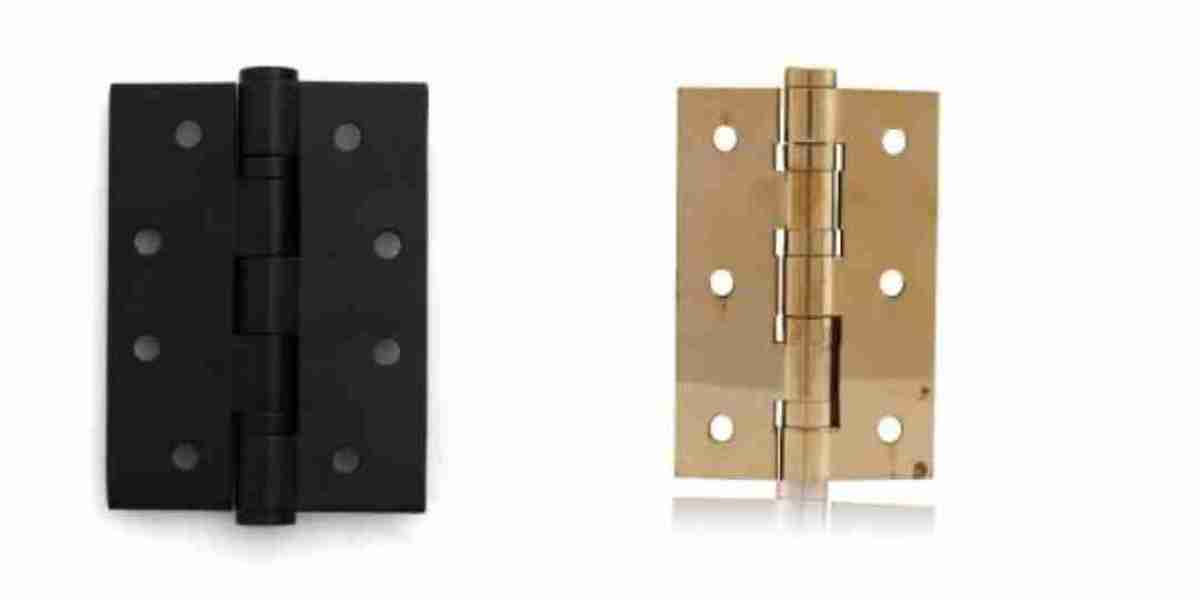Automotive window regulators are vital parts of a vehicle, facilitating the effortless raising and lowering of windows. Positioned within the car doors, these mechanisms are indispensable for the functionality of both manual and electric window systems. In modern vehicles, automotive window regulator contributes significantly to passenger comfort and security. A malfunctioning regulator can cause windows to get stuck in one position, potentially leading to security risks and discomfort.
The design and operation of window regulators have evolved over the years. Early models featured simple mechanical systems, but advancements in technology introduced electric regulators, which are now prevalent in most contemporary vehicles. Electric window regulators allow drivers and passengers to operate windows at the touch of a button, enhancing convenience.
Why You Need Window Regulators Upgrade?
Despite their benefits, window regulators can experience wear and tear over time, just like any other mechanical component. The frequent use of windows, exposure to elements, and other factors can contribute to their degradation. Understanding the essential operation and common issues associated with these regulators can help vehicle owners maintain their functionality and address problems promptly. Identifying early signs of trouble, such as unusual noises or sluggish window movement, is crucial for preventing more significant issues and ensuring the windows remain operational and secure.
Automotive window regulators, whether manual or electric, are essential to the overall driving experience. Their importance goes beyond mere convenience; they also contribute to the vehicle's security by ensuring windows can be closed appropriately. Regular maintenance and timely repairs can keep these systems in good working condition, enhancing both comfort and safety for vehicle occupants.
Types of Window Regulators
Manual window regulators require the user to crank a handle to move the window up or down. Although they are less common in modern vehicles, they are still found in some older models. On the other hand, electric window regulators are controlled by a switch, offering more convenience and ease of use. Regulators can be further divided into cable-operated and gear-driven systems within these categories. Cable-operated systems use a series of cables to move the window, whereas gear-driven systems utilise gears and levers to achieve the same effect. Each type has its advantages and potential drawbacks regarding durability and performance.
Common Issues with Window Regulators
Several signs indicate a faulty window regulator. If a window is slow to respond or makes unusual noises, it may signal a problem. Windows that won't move or get stuck halfway are also clear indicators of issues. Common causes of failure include worn-out cables, broken gears, or a malfunctioning motor in electric regulators. Occasionally, debris or a lack of lubrication can impede the system's function, causing further complications. Identifying these symptoms early can help prevent more extensive damage and costly repairs.
Repair and Replacement of Window Regulators
For those adept at car maintenance, tackling minor issues with window regulators can often be managed at home. Ensuring that the system is well-lubricated and free from debris can resolve many common problems. Using a suitable lubricant on the tracks and moving parts helps smooth the operation and reduces wear over time.
However, some issues may necessitate replacing the window regulator. This task can be complex, especially in modern vehicles with intricate electric systems. If you are not confident in completing the repair, it is wise to seek professional assistance to avoid causing further damage.
The first step in replacing the regulator is to acquire the appropriate regulator for your vehicle. Ensure that the part matches your vehicle’s make and model. Removing the interior door panel is often required, which involves disconnecting various components like handles and switches. Carefully noting the placement of each part can assist in reassembly later.
For manual window regulators, once the door panel is removed, the regulator is usually held in place by several screws or bolts. After removing these, the regulator can be replaced with a new unit. You must disconnect the motor and any electrical connections for electric window regulators before removing the faulty part. Installing the new regulator involves reversing the removal process and ensuring all connections are secure and aligned correctly.
The Cost of Replacing a Window Regulator
The cost of replacing a window regulator can vary when professional help is sought. Manual regulators tend to be less expensive to replace than electric ones, but labour costs will also influence the overall price. Opting for a trusted garage or mechanic ensures the replacement is done correctly and can save money in the long run by preventing future issues.
Numerous online resources and video tutorials provide step-by-step guidance for those keen on DIY repairs. However, improper installation can lead to further complications, making professional help a prudent choice if you are uncertain. Regular maintenance and timely repairs will keep your window regulators functioning efficiently, providing a more comfortable and secure driving experience.
How Do Automotive Window Regulators Ease Driving?
Convenience and Ease of Use
Automotive window regulators enhance the driving experience by allowing effortless window adjustments. Electric regulators, in particular, enable one-touch operation, eliminating the need for manual cranking. This added convenience is especially beneficial for drivers who frequently need to adjust their windows, such as when passing through toll booths or drive-thrus.
Enhanced Safety in Various Conditions
Swiftly raising or lowering windows is a key safety feature, particularly in adverse weather conditions. Whether you're dealing with sudden rain, strong winds, or extreme temperatures, a reliable window regulator allows you to adjust windows without distraction, helping you focus on the road.
Improved Climate Control and Comfort
A properly functioning window regulator contributes to better interior climate control. By quickly adjusting windows, you can regulate airflow and temperature without over-relying on air conditioning, increasing comfort and potential fuel savings. Smooth window operation also prevents unwanted drafts, making a quieter and more enjoyable ride.
Smooth Performance for a Better Driving Experience
An efficient window regulator ensures windows open and closes swiftly and smoothly, preventing sudden jerks or jams. This improves convenience and usability and reduces wear and tear on other components, such as the motor and window tracks.
Maintaining a functional and high-quality window regulator allows drivers to enjoy a safer, more comfortable, and hassle-free driving experience.
Choosing the Right Automotive Window Regulator
Choosing the proper automotive window regulator involves several key considerations to ensure the best fit and functionality for your vehicle. Compatibility is paramount; ensure the regulator matches the make and model of your vehicle to avoid installation issues. Knowing whether your car uses manual or electric window regulators will also guide your choice.
Consider the mechanism type: cable-operated systems versus gear-driven systems. Cable-operated regulators are typically more lightweight and less expensive. Still, they might not offer the same durability as gear-driven systems, which are known for their robust construction. Assessing your vehicle's specific needs and your personal preferences will help determine the best option.
Brand reputation is another crucial factor. Trusted manufacturers usually offer reliable and durable products. These brands often provide warranties, offering added peace of mind and protection against potential defects. To identify reputable brands, do your research, check customer reviews, and perhaps seek recommendations from professionals.
Longevity and Performance of Window Regulators
Quality materials play a significant role in the longevity and performance of window regulators. Opt for regulators made from robust, corrosion-resistant materials, especially if you live in an area prone to harsh weather conditions. High-quality construction can help prevent common issues like wear and tear, ensuring a longer lifespan for the regulator.
If you're considering an upgrade from a manual to an electric window regulator, be prepared for a more involved installation process. This often requires additional components, such as switches and wiring harnesses. In such cases, professional installation might be advisable to ensure proper functionality and avoid potential issues.
Price is also a consideration but shouldn't be the sole determining factor. While it's tempting to opt for the cheapest option, investing in a high-quality regulator can save you money in the long run by reducing the likelihood of frequent replacements or repairs. Balance cost with quality and reputation to make an informed decision.
Ultimately, the right window regulator will enhance your vehicle's functionality and comfort. By considering compatibility, mechanism type, brand reputation, material quality, and cost, you can choose a regulator that meets your needs and ensures a seamless driving experience.
Maintaining Your Window Regulators
Regular upkeep of window regulators is essential to ensure they function optimally over time. One key maintenance task is periodically cleaning the window tracks. Dirt and debris can accumulate in these areas, causing the window to operate less smoothly and potentially leading to damage. Use a soft brush or cloth to remove any build-up, ensuring the tracks are clear of obstructions.
Lubrication is another critical aspect of maintaining window regulators. Applying a suitable lubricant to the moving parts can minimise friction and wear. Silicone spray is often recommended as it does not attract dirt and provides a long-lasting coating. Be sure to lubricate the window tracks, gears, and other moving components to keep the system running smoothly.
Operating the windows regularly, even if you don't often open them, is also beneficial. This helps to keep the mechanisms active and can prevent them from seizing up due to inactivity. During colder months, be cautious when using the windows, as frozen tracks can strain the regulators. Allowing the car to warm up before operating the windows can help mitigate this issue.
Inspecting the window seals is another crucial maintenance step. Damaged or worn seals can allow water and dirt to enter the window mechanism, leading to potential problems. If you notice any deterioration in the seals, replace them to protect the window regulators from damage.
For electric window regulators, ensure the electrical connections are secure and corrosion-free. Faulty wiring or corroded connections can lead to operational issues and may necessitate repairs. Checking these components during regular vehicle maintenance can help identify problems before they become severe.
Lastly, avoid placing undue stress on the windows. Forcing a window up or down when it encounters resistance can damage the regulator. Instead, identify and address the underlying issue to prevent further complications. Following these maintenance tips can help ensure your window regulators remain in good working order, contributing to a more comfortable and secure driving experience.
Conclusion
Automotive window regulator is essential for properly functioning a vehicle's windows, contributing significantly to comfort and security. Its importance is often overlooked until a problem arises, such as a stuck or unresponsive window. Understanding the types of window regulators, from manual to electric, and recognising common issues can help maintain their functionality. Regular upkeep, including cleaning and lubrication, can extend the lifespan of these mechanisms. While some repairs can be managed at home, more complex issues may require professional assistance to ensure the job is done correctly. By being proactive in maintaining and repairing your vehicle's window regulators, you can ensure a smoother and safer driving experience.
FAQS
1. How often should automotive window regulator be serviced?
Whilst automotive window regulator doesn’t require routine servicing, checking it during regular vehicle maintenance sessions is prudent. This becomes particularly important if you notice changes in your windows' operation. Unusual noises, sluggish movement, or stuck windows can all indicate that your window regulators might need attention. Routine checks can help identify potential issues early, ensuring minor problems don't escalate into more significant and costly repairs.
2. Can I switch from a manual to an electric window regulator?
Yes, converting from a manual to an electric window regulator is possible, though the process can be involved. The conversion typically requires additional components such as switches, wiring harnesses, and possibly new door panels to accommodate the electric controls. Given the complexity of the task, professional installation is often recommended. A skilled mechanic can ensure that the new system is correctly installed and fully operational, avoiding potential pitfalls that might arise from DIY attempts.
3. Are aftermarket window regulators as reliable as OEM parts?
Aftermarket window regulators can be as reliable as Original Equipment Manufacturer (OEM) parts, provided they are sourced from reputable manufacturers. Ensuring that the aftermarket part is compatible with your vehicle's make and model is essential. When considering aftermarket options, research the brand's reputation and read customer reviews to gauge the quality and reliability of their products. While OEM parts are often perceived as more reliable due to their direct fit and adherence to manufacturer specifications, high-quality aftermarket parts can offer a cost-effective alternative without compromising performance.
Related Business Listings |





